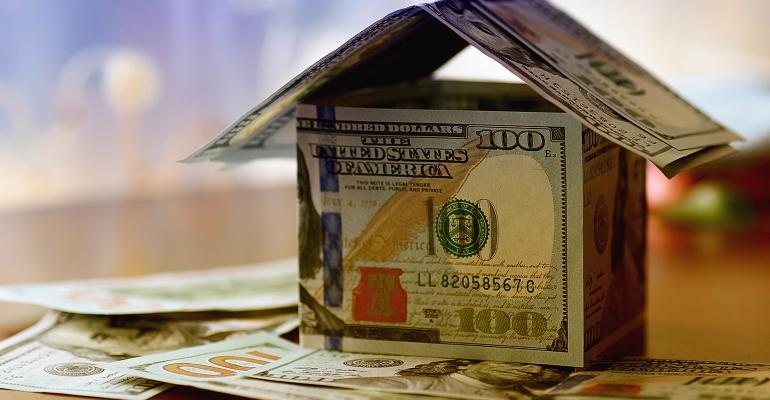(Bloomberg Opinion) -- American consumers have surprised many economists this year by continuing to spend even as their savings shrink and the labor market cools. They’ve been aided in part by pockets of deflation that have boosted their purchasing power on things such as gasoline, automobiles and airfares.
But with the personal saving rate near its lowest level since the mid-2000s, it’s fair to ask whether consumers will keep spending. The slow revival of a long-dormant financial product may offer a partial answer.
Home equity loans give people with substantial wealth locked up in a house the ability to take money out to fund things like renovations or debt consolidation or a family vacation without having to refinance their entire existing mortgage. We’ve started to see a slow but consistent rise in such loans on bank balance sheets, with 2025 looking like a year of growth for a product that fell out of favor after the subprime mortgage crisis.
There’s good reason why home equity loans faded into irrelevance. Underwriting standards tightened significantly following the 2008 financial crisis after being way too loose in the mid-2000s. It took years for home values to go up enough for homeowners to even have enough equity to borrow against. Households generally spent much of the 2010s paying down debt rather than taking on new debt. And mortgage rates continued to hit new lows throughout the decade, making a full mortgage refinance more compelling than home equity loans, which are pricier.
For people of a certain age, there was also a negative stigma attached to home equity loans — in the aftermath of the 2008 recession, a stereotype that gained little sympathy was the homeowner who borrowed against their house to buy a boat or a car, only to wind up losing their job and house.
There are two types of home equity loans. Fixed-rate loans function as a second mortgage with a lump sum being borrowed, a predetermined repayment schedule, and usually a fixed interest rate. And there are home equity lines of credit, or HELOCs, which act more like credit cards; they have variable interest rates and allow borrowing up to a set limit.
HELOC balances at banks shrank throughout the 2010s and even in the early 2020s as low mortgage rates incentivized full refinancings. Revolving home equity loans have been climbing by 1% or more, year over year, in recent weeks, indicating banks and borrowers are beginning to favor these products again.
This is particularly noteworthy since unlike regular mortgage rates that have already priced in a significant number of expected rate cuts by the Federal Reserve, HELOCs tend to be priced off the central bank’s policy rate. Should the Fed end up reducing its benchmark by 2 percentage points or more by the end of 2025, as markets currently expect, HELOC rates would fall substantially.
Tens of millions of American homeowners find themselves somewhat trapped in their current houses, tied down by the rock-bottom mortgage rates they locked in during the pandemic. Many of these properties have seen considerable appreciation, too.
So if a homeowner with a 3% mortgage wants to borrow to redo a kitchen or build an extension, a HELOC may well appeal. Bank OZK, a regional bank that operates in states including Florida, Georgia, North Carolina and Texas, is advertising HELOC rates of 9%, which it calculates based on the Wall Street Journal’s Prime Rate plus a margin. That rate could easily fall to 7% or 8% once the Fed gets going.
And there’s a lot of equity for households to tap. Owners’ equity in their property assets — the part that’s mortgage-free — has climbed sharply since the pandemic to levels last seen in the 1960s. Many of these homes are what’s considered old housing stock, in need of upgrades, especially if young families find their starter homes have become their forever homes.
The bottom line is that as the cooling labor market makes it more difficult for Americans to keep spending, high levels of home wealth and anticipated Fed rate cuts provide a compelling backdrop for a home equity loan comeback. A good rule of thumb is to never bet against the American consumer — especially when lower rates are giving homeowners a new piggy bank to raid.
More From Bloomberg Opinion:
- Fed Rate Cuts Are No Magic Fix for Anemic Hiring: Conor Sen
- Big Fed Cuts Are Needed for Young and Jobless: Jonathan Levin
- Fed Criticism Is Cheap, and It’s Mostly Mistaken: Nir Kaissar
Want more Bloomberg Opinion? OPIN <GO>. Or you can subscribe to our daily newsletter.
To contact the author of this story:
Conor Sen at csen9@bloomberg.net





